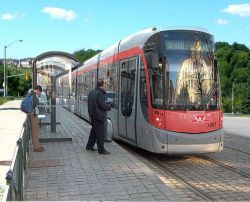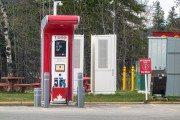We've all read the news by now — on his first day in office, Toronto Mayor Rob Ford called for a halt to Transit City construction and the TTC is now working with Metrolinx to develop a new plan with a bigger focus on subways. Simply put, the stakes are incredibly high with roughly $8.7 billion of investment on the table. Given Toronto's deficit of transit infrastructure, we need to make sure we manage this money responsibly and put it to best use.
Stepping away from Transit City

The potential of Transit City had me excited; I've ridden light rail transit (LRT) in a few cities and was eager to see so much of it coming to Toronto. After all, light-rail trains are pretty similar to subways — they're fast, reliable and much more efficient than other forms of transit such as streetcars or busses.
But I wasn't just excited about Transit City because I prefer taking the train over taking the bus — the Transit City plan would bring a variety of benefits for Toronto commuters which Pembina presents in a new report released today, Making Tracks to Torontonians, for example:
- Nearly 150 kilometers of new rapid transit lines
- An additional 600,000 people and jobs would be within 500 meters of rapid transit
- Over 100,000 low-income residents over the age of 15 would be within a six-minute walk of at least one of the Transit City lines
- Over 325,000 tonnes of greenhouse gas emissions would be prevented, with 224 million rides per year on the new lines
From my perspective, these numbers don't just reflect what Transit City was going to accomplish — they're the standard against which we need to compare any alternative transit plan.
What's on the table
During the mayoral race, Rob Ford's transit vision called for an extension of the Sheppard subway — west to Downsview Station and East to Scarborough City Centre — along with a conversion of the existing Scarborough rapid transit line to subway. This appears to be the starting point for a new transit plan as Rob Ford is considering redirecting committed funding for four of Transit City's eight LRT lines, deemed "priority projects" to an alternative plan centered on subways.
A comparison of the four priority projects and Rob Ford's initial subway proposal shows that the subway extensions would dramatically cut the amount of new transit service and the number of commuters served. In short, our analysis suggests it does not make sense to shift the $8.7-billion dollars of provincial funding away from LRT construction and towards subway construction.
|
Metric |
Four LRT priority projects |
Proposed subway extensions |
|
Cost |
$10.5 billion |
$6.2 billion |
|
Length of new rapid transit |
75 km |
18 km |
|
Projected jobs and population within a six-minute walk |
290,000 |
61,000 |
|
Low-income population within a six-minute walk |
45,000 |
7,200 |
As the table above shows, on a per-km basis, the proposed subway extension is about 2.5 times more expensive than the four LRT projects meaning with same budget it simply won't be able to serve the same area or number of commuters.
What's more, a peak ridership of 15,000 commuters is required for subways to be efficient and cost-effective. But with projected peak riderships of 3,100 along Sheppard and 6,400 on the Scarborough line, Ford's proposal falls well short — meaning a subway extension along these routes would not make good use of taxpayers' money, not to mention that it would delay new transit service along the Sheppard route by six years, from 2014 to 2020.
Making transit work for all of Toronto
 In a recent motion put forward by Mayor Ford, city council declared transit an essential service — which suggests the mayor and council understand just how important transit is in our city. Considering this mayor and council were largely elected with a mandate of spending money responsibly, I would argue that council should only adopt a transit plan which:
In a recent motion put forward by Mayor Ford, city council declared transit an essential service — which suggests the mayor and council understand just how important transit is in our city. Considering this mayor and council were largely elected with a mandate of spending money responsibly, I would argue that council should only adopt a transit plan which:
1. Brings rapid transit access to all corners of Toronto: Transit is important to the entire city. Under Transit City only a few small pockets of the city would be further than 2 km from rapid transit — a vast improvement from the current state of affairs where most of Etobicoke and much of Scarborough lack adequate access.
2. Connects low-income residents to rapid transit: Some of Toronto's poorest communities are also those that have the least access to reliable and affordable transportation. Investing in light rail transit would connect the most in-need residents with the opportunities and support available in other parts of the city.
3. Provides rapid transit in an economically responsible manner: The type of transit service (subway trains, LRT trains) should be selected according to best practices, ridership projections and density projections. This ensures that we spend our limited money wisely, and are not stuck paying to support transit lines that do not have the ridership they require.
Toronto's priority LRT projects would help build a fast, efficient and affordable transit network where it's needed most. Building subways for a handful of riders in Scarborough would shortchange the rest of the city's commuters and move this city's transit future nowhere fast.





